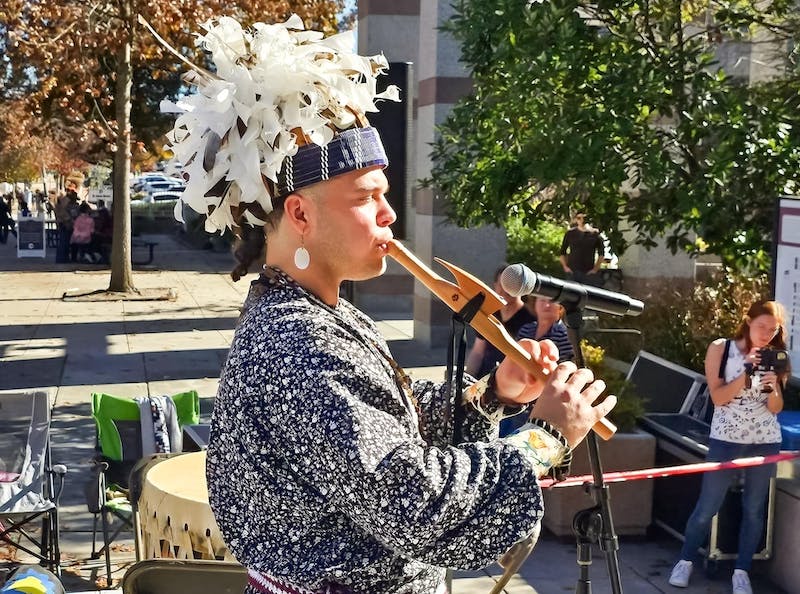“We’re not just a part of the history books and the movies and TV — we’re actual people,” he said. “We’re still living and breathing and we’re still singing our songs and doing our dances and living this way of life every day.”
Norma Jean Locklear-Richardson is a textile artist and a member of the Lumbee Tribe of North Carolina. She runs Skyworld Stitches with her daughter Stevie Lowry designing and sewing ribbon skirts and embroidered regalia.
Ribbon skirts, rather than representing any one tribe, are an artwork shared by many tribes across the United States. They are a relatively recent tradition, emerging from ribbon traded from European settlers in the late 18th century.
Locklear-Richardson, who has been making regalia for around 20 years, said that in the past 10 to 15 years, ribbon skirts have become more casual wear, allowing Native American women a means of displaying their culture in their everyday wardrobe and saving the regalia for special events.
She incorporates an individual’s favorite colors, tribe colors and personal interests to create a personalized representation of their culture and identity. Detailed embroidery sits atop vibrant fabrics in between a rainbow of appliquéd satin and ric rac ribbons, each tailored to the wearer.
Locklear-Richardson taught Lowry to sew when she was 13 years old. Lowry danced in powwows, wearing regalia sewn by her mother, even before that. Now, as an adult, she makes her own.
“I like having different outlets that I can use — being able to dance and create the things that I wear while I’m dancing,” Lowry said. “It really means more than anything.”
Though artists like Oxendine and Locklear-Richardson celebrate art forms with deep roots in history and cultural identity, some deviate from those art forms through new mediums and intersecting identities.
Christopher Kennedy’s drawings stray from the expectation of Native American traditional art. He is a self-taught contemporary artist and a member of the Lumbee Tribe of North Carolina.
Though several of his past drawings highlight his Lumbee heritage, he tends to focus on more technical challenges and broad themes.
Kennedy’s social media pages show the dozens of hours he spends making hyper-realistic colored pencil drawings—mostly hands—reach seemingly off the page. Several of his drawings feature other aspects of human anatomy, like eyes and faces, but hands dominate his portfolio.
“You talk with your mouth, you look with your eyes — but you touch and feel with your hands,” he said. “I think it’s just a bigger, larger universal theme about people when I think about hands.”
To get the day’s news and headlines in your inbox each morning, sign up for our email newsletters.
Though he is drawn to themes beyond race, identity and gender, he said does not identify any less with his Native American heritage.
“Because I’m Native American, the artwork that I do is Native American,” he said.

